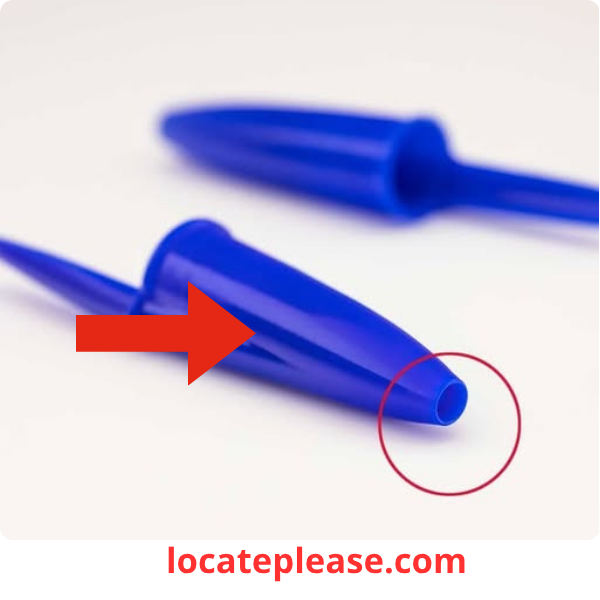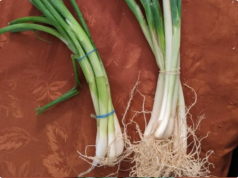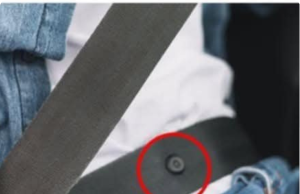You’ve used them countless times — writing notes, signing documents, doodling during meetings. But have you ever stopped to look closely at the cap of a pen ? Specifically, that tiny hole at the top?
It’s so small, so subtle, most of us have never given it a second thought. Yet, this unassuming feature is the result of brilliant engineering, safety innovation, and thoughtful design . Far from being decorative or accidental, the hole in pen caps serves several vital purposes — some of which could even save a life .
Let’s uncover the surprising story behind this everyday mystery.
The History and Evolution of Pen Caps
Pen caps weren’t always a thing. In the days of quills and dip pens , there was no need to cap the nib — you simply cleaned and stored them separately. But with the rise of fountain pens in the 19th century, and later ballpoint and gel pens , the need for a protective cover became essential.
Caps were initially designed to:
- Prevent ink from drying out
- Protect the delicate writing tip
- Keep pockets and bags clean
As pens became mass-produced and widely used — especially in schools and offices — manufacturers began refining their design. One of the most important innovations? The little hole at the top.
Why Is There a Hole in Pen Caps? 4 Key Reasons
1. Safety First: Preventing Choking and Suffocation
This is the most critical reason — and one that has saved lives.
Children (and even adults) often chew on pen caps absentmindedly. If a cap is accidentally inhaled or swallowed , it can become lodged in the airway, blocking airflow and leading to asphyxiation .
But here’s the lifesaving twist: The hole allows air to pass through , even if the cap is stuck in the throat. This small opening can provide just enough airflow to prevent suffocation, giving precious time for medical help to arrive.
This safety feature became standard after international safety regulations , such as those from the International Organization for Standardization (ISO) , required that pen caps be either:
- Too large to swallow
- Ventilated (with a hole)
- Or made of a soluble material
Today, many pen manufacturers follow ISO 11540 , which specifies that pen caps must allow a minimum airflow of 8 liters per minute through the hole — enough to sustain breathing in an emergency.
🛑 Fact: In the 1990s, a tragic incident involving a teenager who choked on a pen cap led to widespread adoption of this safety standard.
2. Pressure Equalization: Keeping Ink Flowing Smoothly
Have you ever uncapped a pen and found ink leaking out — or worse, dried up inside?
The hole helps prevent this by equalizing air pressure inside the pen. When a pen is capped, changes in temperature, altitude, or humidity can create pressure differences between the inside and outside of the barrel.
Without a way for air to escape or enter:
- Pressure can build up and force ink to leak
- A vacuum can form, making it harder for ink to flow
The tiny hole acts as a pressure release valve , allowing air to move in and out gently. This keeps the ink reservoir stable and ensures a smooth, consistent writing experience — whether you’re at sea level or on a high-altitude flight.
3. Manufacturing and Cost Efficiency
From a production standpoint, the hole isn’t just functional — it’s economical .
During the injection molding process , molten plastic is injected into a mold to form the cap. The hole:
- Reduces the amount of plastic needed
- Speeds up cooling time
- Makes it easier to eject the cap from the mold
This translates to:
- Lower material costs
- Faster production
- Less waste
In an industry where millions of pens are made daily , even a tiny reduction in plastic per cap adds up to massive savings.
4. Aesthetic and Brand Identity
While not the primary reason, the hole can also play a design role .
Some pen brands use the hole as a signature feature , incorporating it into their visual identity. For example:
- Parker and Lamy pens often feature a small hole as part of their sleek, professional look.
- The hole can be aligned with the clip or used to create symmetry in the cap’s design.
In premium pens, the hole is carefully polished and positioned to look intentional — not like an afterthought.
Common Misconceptions About the Hole
Despite its importance, many people still misunderstand the purpose of the hole. Here are some common myths:
❌ “It’s just for hanging the pen on a string.”
→ While possible, this is not the main purpose.
❌ “It’s purely decorative.”
→ Far from it — it’s a critical safety and functional feature.
❌ “Only cheap pens have holes.”
→ No — even high-end pens include them for safety and performance.
❌ “The hole causes ink to dry out faster.”
→ The hole is too small to significantly affect evaporation — and the benefits far outweigh any minimal risk.
Public Awareness: Why Most People Don’t Know
Despite its life-saving potential, most people have no idea the hole exists — let alone why.
A 2020 informal survey found that:
- Over 70% of respondents had never noticed the hole
- Only 1 in 5 knew it was a safety feature
This lack of awareness is exactly why education matters. Simple objects like pens are often the result of years of innovation and safety testing — yet we take them for granted.
Final Thoughts: A Tiny Hole, A Huge Impact
The next time you pick up a pen, take a moment to look at the cap. That tiny hole is more than a manufacturing detail — it’s a quiet hero in the world of everyday design.
It’s a reminder that even the smallest features can have profound purposes :
✅ Saving lives
✅ Improving performance
✅ Reducing waste
So, the next time someone asks, “Why does a pen cap have a hole?” — you’ll have the answer.
And who knows? That little piece of knowledge might just come in handy when you least expect it.
🖋️ Sometimes, the most important things are the ones we never notice.










